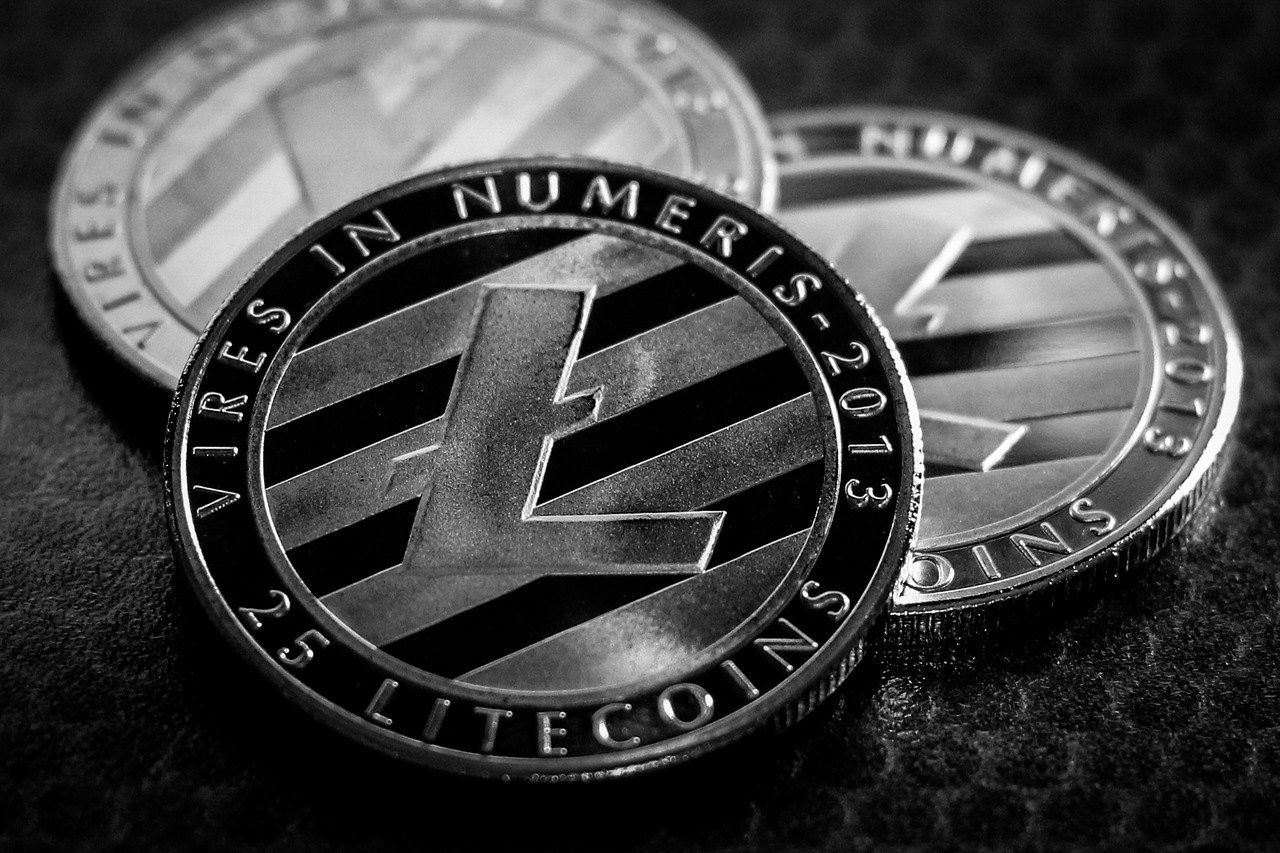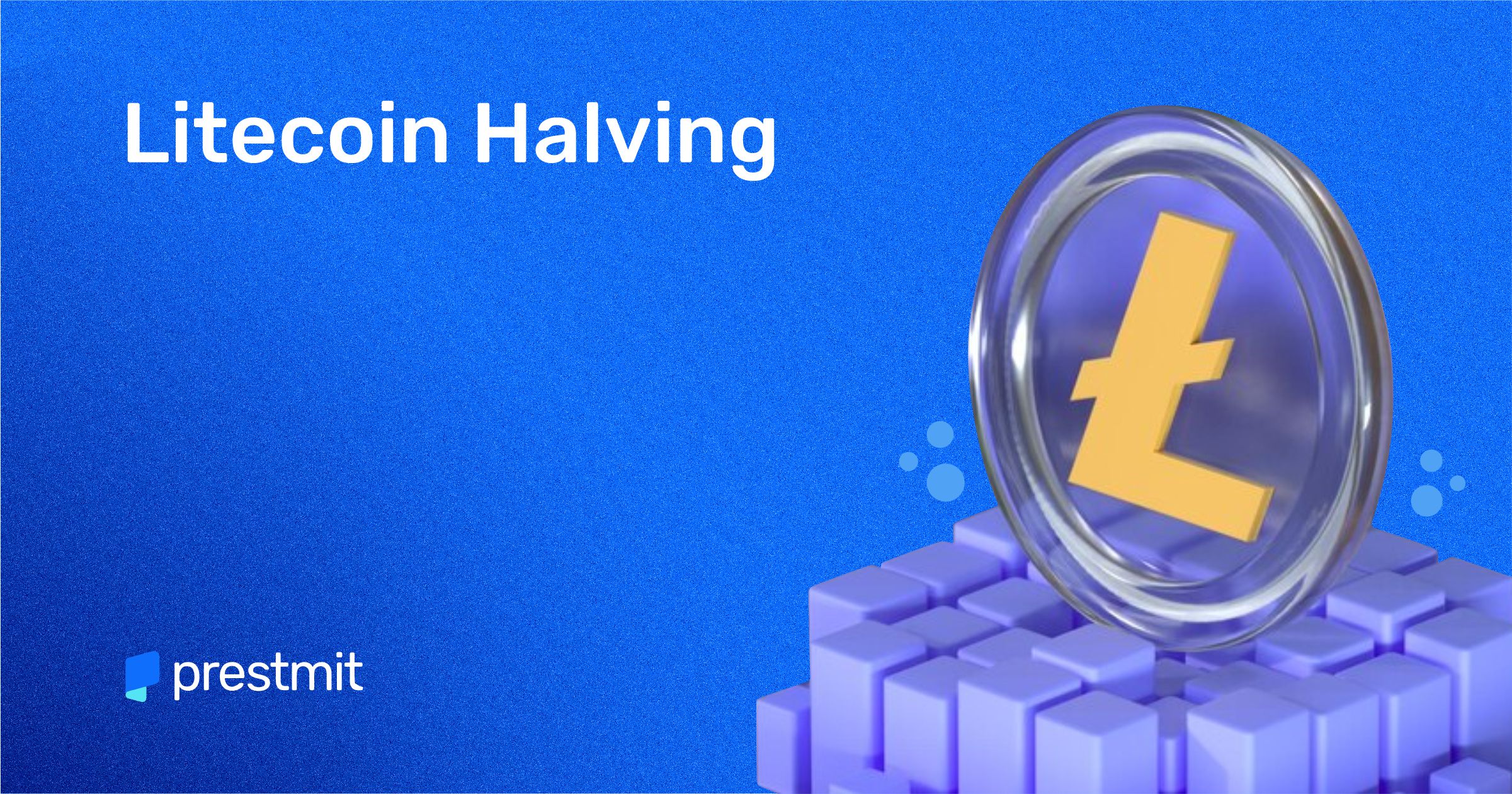Table of Contents
Cryptocurrencies are built on complex technology, but some of their most important principles are surprisingly simple. One of these is called “halving” and this is a built-in mechanism that reduces the rate at which new coins are created.
Litecoin undergoes a halving event every four years or so, cutting miners’ rewards for verifying transactions in half., which is similar to Bitcoin halving. This process gradually slows the production of new Litecoins, making the currency scarcer over time.
In this article, we’ll look at what Litecoin halving is, how it works under the hood, why it matters for miners, investors, and the network, the history so far, and when the next halving is expected.
What is Litecoin Halving?

Litecoin halving is a predetermined event programmed into the network’s code. The reward given to miners for mining a new block is cut in half every time a certain number of blocks is mined. This event means that miners will receive 50% fewer LTC for each block after the halving takes place.
The rate at which new Litecoins enter circulation slows down when miners receive fewer new coins for the same work. This affects the coin’s supply schedule, scarcity, inflation control, and the incentives for mining.
Litecoin halving occurs after every 840,000 blocks are mined, which takes approximately four years to complete, and it has already taken place in 2015, 2019, and 2023. When Litecoin was launched in 2011, miners received 50 LTC for each block mined before the halving events started.
The block reward was halved to 25 LTC on the first Litecoin halving in 2015 and reduced to 12.5 LTC in the second halving event in 2019. The third halving in 2023 saw the reward block reduced to 6.25 LTC.
This mechanism is pivotal in distinguishing the economic model of Litecoin from the inflationary nature of fiat currencies, which central banks choose to influence inflation rates. It is designed into the Litecoin network to control the supply of LTC – making it a deflationary cryptocurrency.
How Does Litecoin Halving Work?
Every time a miner (or mining pool) successfully mines a new block on the Litecoin blockchain, that miner receives a “block reward”. This reward is given in LTC. This reward was quite high in the early days of Litecoin. But the reward gets reduced through halving events over time. Blocks in the Litecoin network are produced on average about every 2.5 minutes (faster than many others) hence, this interval translates roughly to about every four years.
The protocol is set so that when 840,000 blocks have been mined since the last halving (or since the start), a halving event is triggered automatically. At the moment of that threshold being reached, the block subsidy (i.e., the reward) is cut in half. No human intervention is needed as it has been programmed into the code.
Block times vary slightly (sometimes faster, sometimes slower depending on hash rate, difficulty adjustments) so the exact date/time of a halving can shift. For example, even though we know it happens every 840,000 blocks, the time taken to mine those blocks fluctuates.
In addition, once the reward becomes very small (after many, many halvings) the system will eventually reach a point where block rewards approach zero, and the total supply cap is reached. This is estimated to happen around the year 2142.
Why Does Litecoin Halving Matter?
1. Scarcity and inflation control
The Litecoin halving mechanism is a built-in way to limit inflation. The supply of new LTC slows down through reducing rewards, which adds to scarcity (assuming demand remains stable or grows). This is similar in concept to how gold becomes harder to mine over time and ensures that the supply doesn’t flood the market quickly.
2. Mining economics
Miners are the backbone of the blockchain; they validate transactions, add blocks, and secure the network. Miners must adapt when their reward per block is reduced. Some less efficient miners may leave, which could temporarily affect network hash rate or difficulty. This can affect transaction confirmation times and network security.
3. Market psychology and potential price impact
Although halving doesn’t guarantee price movement one way or another, it usually leads to attention from investors and the media. If demand remains constant because issuance slows, basic economics suggests the price might rise. Some historical patterns support this in various cryptocurrencies. However, many other factors (regulation, macroeconomics, adoption, competition) also influence price.
4. Network signaling
A halving event is also a milestone that indicates the network is following its promised schedule and monetary policy. It underlines that the system behaves as designed, which can build trust among users, investors, and the crypto ecosystem at large. In addition, since Litecoin shares many structural similarities with Bitcoin (though with different parameters), some analysts use Litecoin’s halving cycles to gain insight into how other cryptocurrencies might evolve.
What is Litecoin Halving Timeline and History?

First Halving: August 25, 2015
The first halving event for Litecoin took place on August 25, 2015, at block height approximately 840,000. At this point, the block reward was cut from 50 LTC to 25 LTC. This event marked the first major shift in Litecoin’s issuance schedule. The halving followed after about four years of mining, fitting the rough “every 840,000 blocks/4 years” rule.
Second Halving: August 5, 2019
The second halving happened on August 5, 2019, at block height approximately 1,680,000. The reward went from 25 LTC to 12.5 LTC. At this point Litecoin’s issuance was further reduced, continuing the scarcity path.
Third Halving: August 2, 2023
The most recent Litecoin halving took place on August 2, 2023 at block height 2,520,000. The reward dropped from 12.5 LTC to 6.25 LTC per block. This event brought the network closer to the long-term issuance schedule and attracted renewed attention in crypto circles.
The Next Halving: 2027
The next halving is projected to take place when block height reaches approximately 3,360,000 or thereabouts. Many sources estimate this to be in the middle to late 2027. For example, one countdown site projects July 26, 2027 as the date of the next halving. Other sources suggest around September 11, 2027. The reward is expected to drop from 6.25 LTC to 3.125 LTC per block in the next halving.
What is the Significance Of Litecon Halving?
1. For Miners
Miners are directly impacted by LTC halving because their mining rewards get reduced by half every time a halving occurs. While some miners, especially beginners, may find the event unfavorable, the process is to keep the Litecoin project attractive and the LTC price stable.
2. For Investors
Investors are always interested in anything that would maximize their profits when they buy, sell, or trade. There is a concept in the crypto world called “buy the rumor, sell the news.” This means that investors can buy as many LTC as possible before the halving occurs and sell Litecoin right before or on the halving day.
Why do they do this? This is because the event often generates a lot of buzz within the crypto community and all platforms, giving Litecoin more attention. This triggers many people to buy LTC, and the increasing demand would make the price rise – favoring investors.
3. For The General Crypto Community
Litecoin halving does not have much impact on the crypto community. Still, enthusiasts who want to mine Litecoin might need to understand how the halving works, which is something they must consider.
Frequently Asked Questions (FAQs) About Litecoin Halving
What triggers Litecoin halving?
Litecoin halving is triggered automatically once the network reaches a predetermined block count. The block reward is cut in half by the protocol itself when the threshold of 840,000 blocks is reached.
How often does Litecoin halving occur?
While the schedule is based on blocks (every 840,000 blocks), the rough estimate is about every four years. However, the exact spacing in calendar time may vary a bit due to fluctuating mining speed and network difficulty.
When is the next Litecoin halving?
The next halving event is projected for sometime around 2027 (mid to late), when block height hits 3,360,000 and the reward will drop from 6.25 LTC to about 3.125 LTC.
Why does the reward change matter?
The reward change changes how many new coins are entering circulation and how much miners get paid. Less new supply means upward pressure on price and for miners, less reward means they may need to be more efficient to stay profitable.
Does halving guarantee price increases?
No. While halving shifts supply dynamics, many other factors like market demand, adoption, technology changes, regulatory environment, and macroeconomics determine price.
What happens after the final Litecoin is mined?
Once block rewards become so small that new coins are effectively no longer being produced. Litecoin miners will rely on transaction fees as the main reward. The supply cap means no more than 84 million LTC will enter circulation.
Is halving good for Litecoin?
LTC halving reduces miners’ block rewards, but it also balances the financial ecosystem of the Litecoin network.
Conclusion
Litecoin halving is not a new phenomenon in the Litecoin network as it has undergone four (4) successive events, with miners’ rewards reduced by half. But while the halving event has not directly affected LTC price, it is important for you to consider the event if you want to go into Litecoin mining. This is to guide your decision on the venture.
Last updated on November 4, 2025

